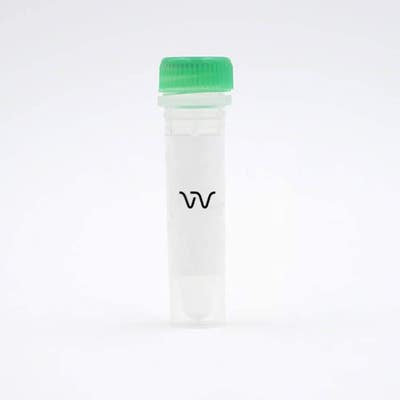

HTRF Supplemented Enzymatic Buffer, 12.5 nmoles


HTRF Supplemented Enzymatic Buffer, 12.5 nmoles






The Supplemented Enzymatic Buffer (SEB) is a proprietary substrate stabilizing component that may be used with KinEASE TK assay to optimize the enzymatic reaction for some tyrosine kinases while maintaining inhibitor properties such as IC50.
For research use only. Not for use in diagnostic procedures.
| Feature | Specification |
|---|---|
| Application | Biochemical Enzymatic Assay |
The Supplemented Enzymatic Buffer (SEB) is a proprietary substrate stabilizing component that may be used with KinEASE TK assay to optimize the enzymatic reaction for some tyrosine kinases while maintaining inhibitor properties such as IC50.
For research use only. Not for use in diagnostic procedures.



HTRF Supplemented Enzymatic Buffer, 12.5 nmoles



HTRF Supplemented Enzymatic Buffer, 12.5 nmoles



Product information
Overview
Some Tyrosine kinase enzymatic activity may require further assay optimization for a sensitive detection of phosphorylation levels. The Supplemented Enzymatic Buffer is a substrate stabilizing buffer that may be used to achieve an optimal enzymatic step prior to detection with the HTRF KinEASE TK kit, while maintaining inhibiting compound pharmacological characteristics.
Specifications
| Application |
Biochemical Enzymatic Assay
|
|---|---|
| Brand |
HTRF
|
| Detection Modality |
HTRF
|
| Product Group |
Buffer
|
| Shipping Conditions |
Shipped Ambient
|
| Target Class |
Kinases
|
| Technology |
TR-FRET
|
| Therapeutic Area |
Metabolism/Diabetes
NASH/Fibrosis
Oncology & Inflammation
|
| Unit Size |
1 Vial
|
Video gallery

HTRF Supplemented Enzymatic Buffer, 12.5 nmoles

HTRF Supplemented Enzymatic Buffer, 12.5 nmoles

Analytical performance
Supplemented Enzymatic Buffer performance
The HTRF KinEASE TK reaction may be run in the presence of SEB, a proprietary substrate stabilizing buffer. This buffer greatly enhances S/B and enables the use of lower kinase concentrations per well. Among validation on other tyrosine kinases, the case below shows the impact of SEB on tests conducted with Abl (Merck Millipore 14-459).
In this SEB titration run, Abl used at 5 ng/well, was incubated 30 min with substrate-biotin (1 µM), and a non-limiting ATP concentration (100 µM) in a final assay volume of 20 µl. SEB concentrations ranging from 0 nM to 50 nM were tested. As shown here, SEB enhances S/B quite significantly.

In this second experiment, Abl was used at concentrations ranging from 0.10 to 10 ng/ml under similar substrate and ATP conditions as previously described, and with either 2.5 or 5 nM SEB. The subsequent S/B improvement at increasing SEB levels makes the use of lower tyrosine kinase concentration possible.

| Tyrosine KinEASE assay | |||
|---|---|---|---|
| Enzyme | Compound | With SEB 50 nM | Without SEB |
| Abl | Staurosporine Gleevec |
0.108 0.043 |
- - |
| CSK | Staurosporine Nexavar |
0.493 4.220 |
0.417 6.175 |
| AGFR | Staurosporine Iressa |
1.069 0.001 |
0.861 0.002 |
| JAK2 | Staurosporine Sutent |
0.00030 0.800 |
0.00035 0.778 |
| JAK3 | Staurosporine Sutent |
0.001 7.639 |
0.001 4.597 |
| PTK5 | Staurosporine Nexavar |
0.039 > 0.1 |
0.036 > 0 .1 |
Resources
Are you looking for resources, click on the resource type to explore further.
This guide provides you an overview of HTRF applications in several therapeutic areas.


How can we help you?
We are here to answer your questions.






























